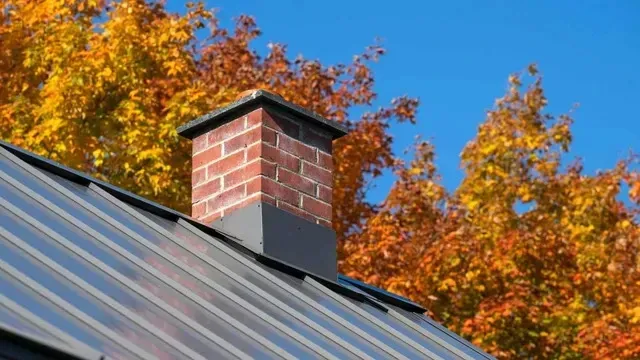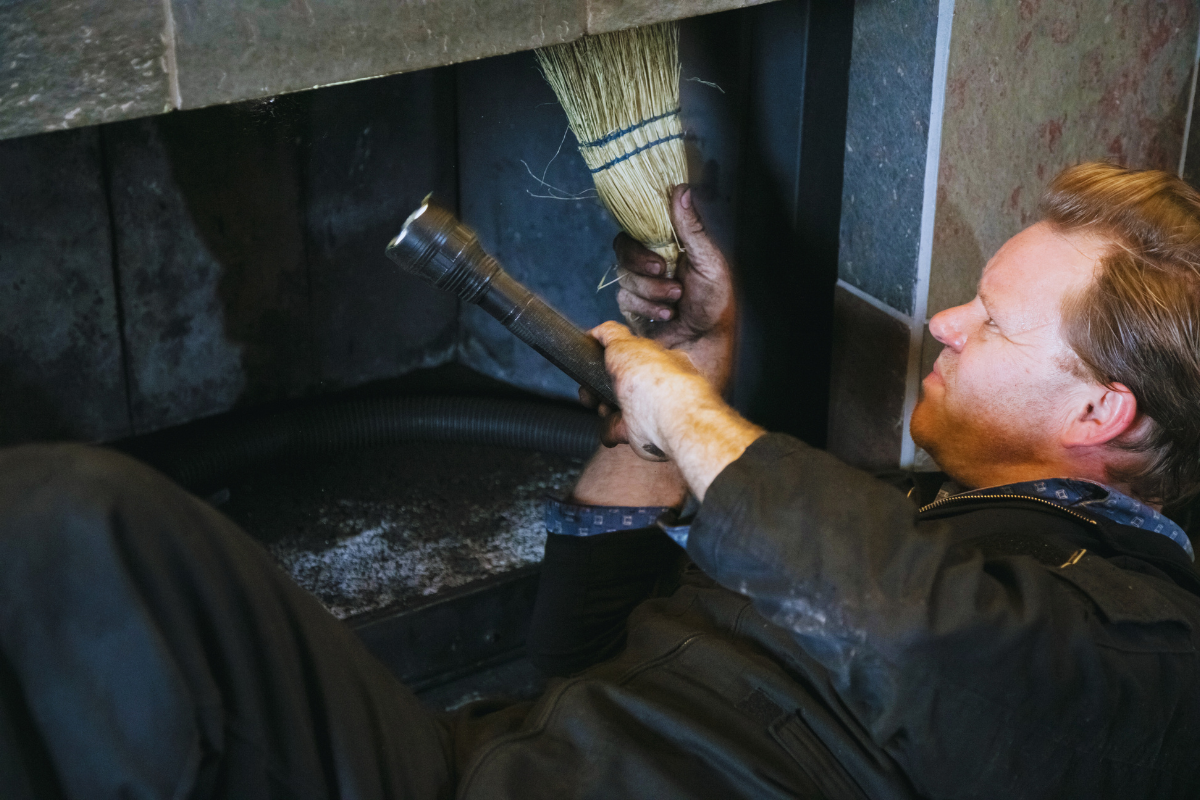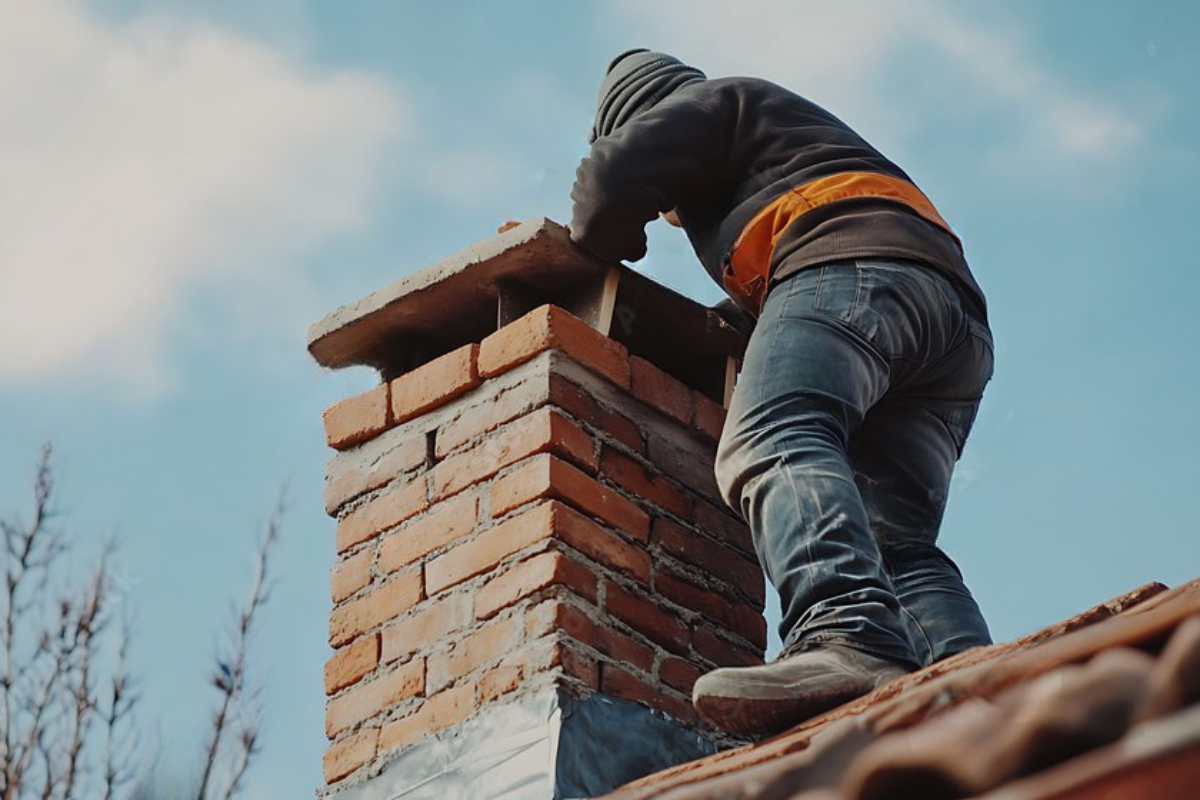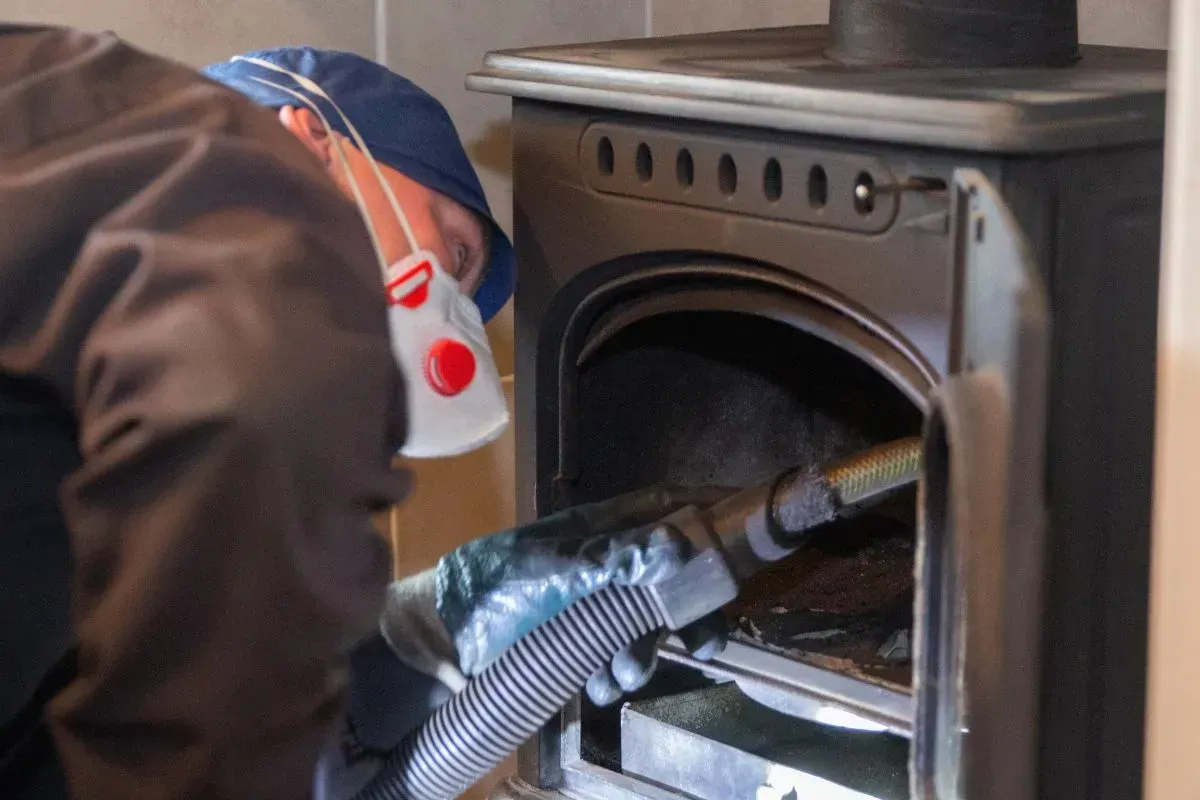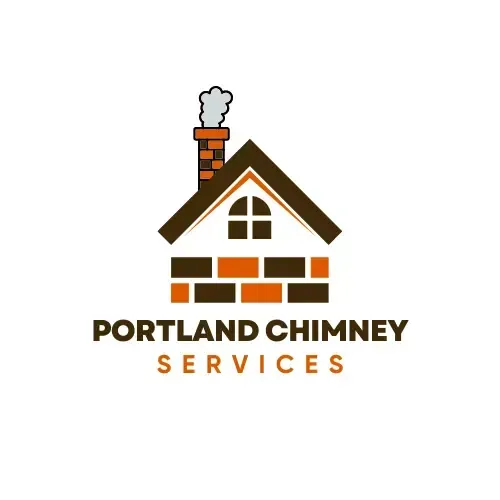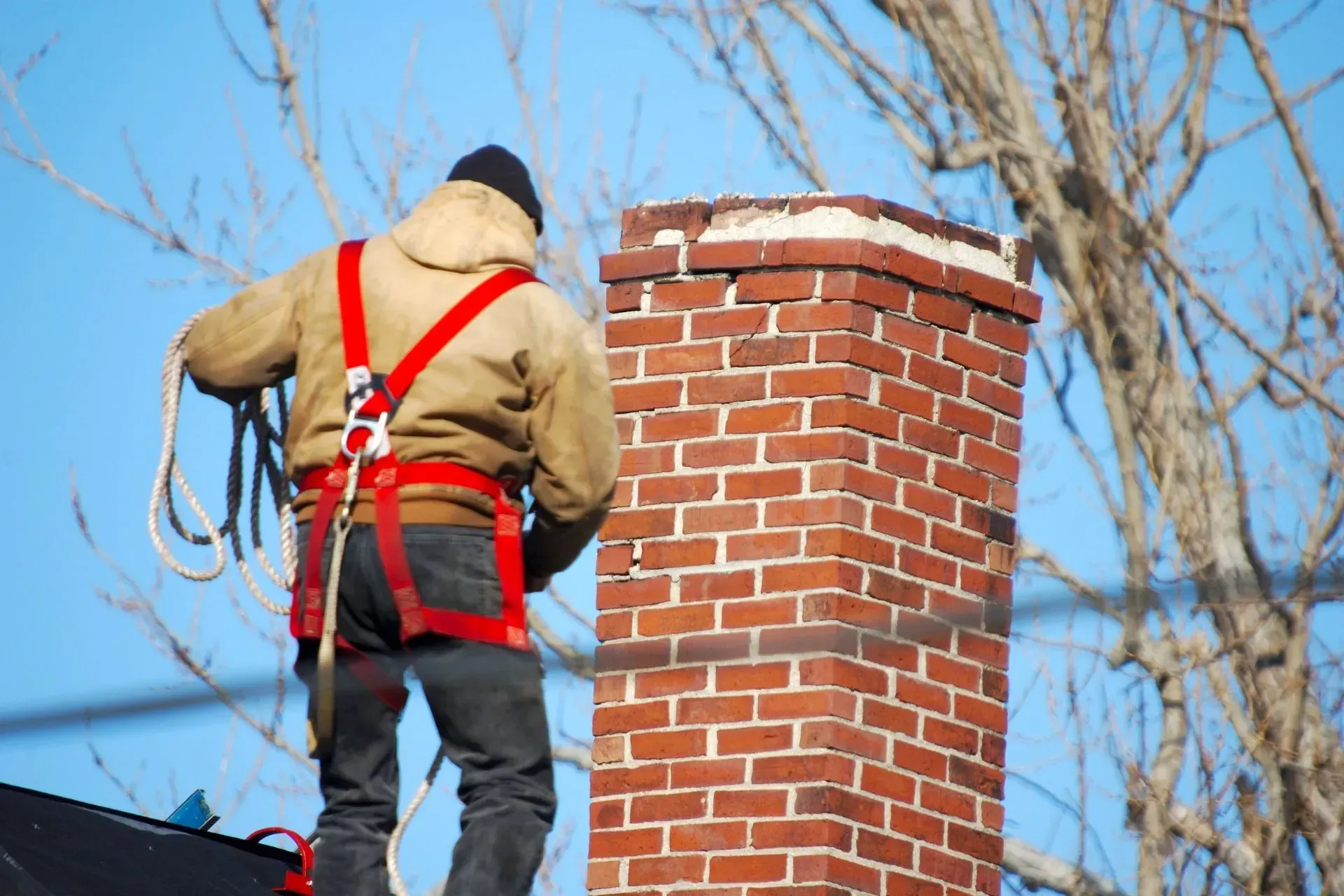Water is a chimney’s worst enemy. Over time, unchecked moisture can eat away at your home’s structure, turn your fireplace into a hazard, and cost you thousands of dollars in repairs. That’s where chimney waterproofing steps in—not just as a preventative measure but as an essential investment in your home’s longevity.
Moisture intrusion isn’t just an inconvenience; it’s an invitation to decay, mold, and structural instability. Fortunately, waterproofing is a smart, relatively simple solution with high long-term returns.
Let’s explore exactly how chimney waterproofing shields your home—and your wallet—from expensive repairs.
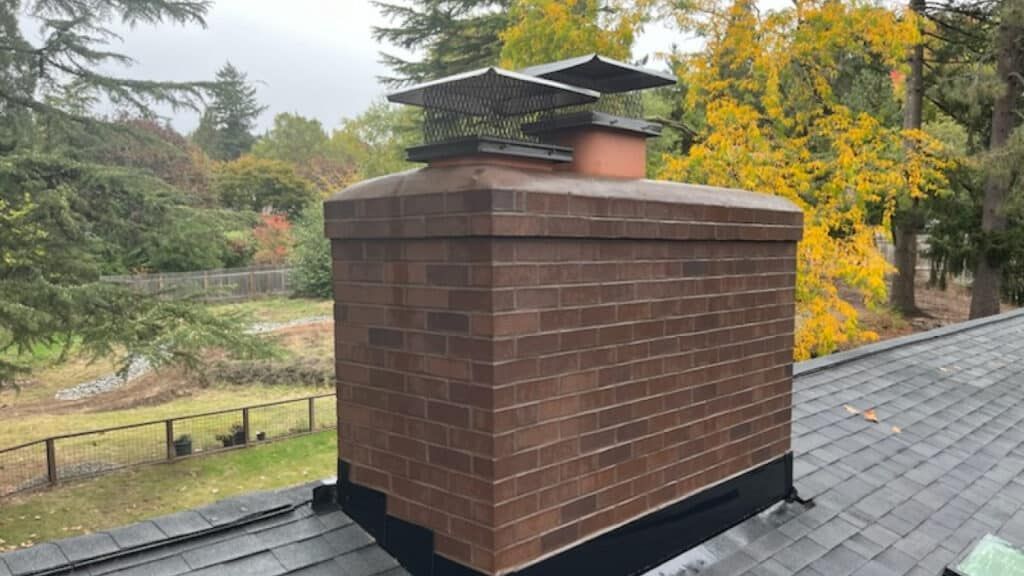
Introduction to Chimney Waterproofing
Chimney waterproofing is the process of applying a breathable sealant to the exterior masonry of a chimney to prevent water infiltration. Think of it as a raincoat for your chimney—one that lets moisture escape from inside but blocks external water from getting in.
It’s not only about keeping things dry. It’s about preventing irreversible damage, including internal rot, brick decay, and dangerous mold growth—all of which can remain hidden until it’s too late.
Understanding the Structure of a Chimney
A typical masonry chimney is made up of brick, mortar, flashing, a flue, and a chimney crown. Each of these components is prone to water damage in different ways. For instance, bricks are naturally porous and absorb water like a sponge. Flashing can deteriorate over time, and crowns can crack from weather exposure.
The interconnectedness of these parts means that when one area fails, others quickly follow.
Why Chimneys Are Vulnerable to Water Damage
Here’s the deal—chimneys stick out above your roofline, taking the full brunt of rain, snow, and ice. When temperatures dip below freezing, absorbed water inside the bricks expands and contracts, causing cracks. Flashing can separate from the brick due to shifting or improper installation, creating a direct path for leaks.
Wind-driven rain and melting snow are relentless, making chimneys a top source of water entry in homes.
Common Signs of Chimney Water Damage
Be alert for these red flags:
- White stains (efflorescence) on bricks
- Crumbling mortar or bricks (spalling)
- Damp smells inside your fireplace
- Rusted damper or firebox
- Staining on interior walls near the chimney
- Mold or mildew in attic spaces
Spotting these early can help you avoid serious damage down the line.
How Water Causes Structural Chimney Damage
Once water gets into your chimney, the consequences snowball. Mortar joints wash away, bricks crumble, the flue liner deteriorates, and eventually, the entire structure may become unstable. Worse yet, water can seep into surrounding areas of your home, such as drywall, flooring, and support beams.
This domino effect is why chimney waterproofing is so vital.
The Real Cost of Ignoring Chimney Water Damage
Ignoring water damage is a gamble. A basic repair might cost $300–$500, but major structural issues can soar beyond $5,000. Rebuilding a severely damaged chimney might set you back over $10,000. And that’s not including mold remediation, interior wall repairs, or roofing fixes.
Waterproofing, by contrast, typically ranges from $200 to $800—a fraction of the cost of major repairs.
The Science Behind Chimney Waterproofing
Professional-grade waterproofing products are formulated with siloxane or silicone-based compounds. These penetrate masonry deeply and create a breathable barrier. The barrier prevents new moisture from entering but allows existing moisture to evaporate—essential for chimney health.
Types of Chimney Waterproofing Solutions
Chimney waterproofing can involve:
- Masonry sealants: Applied directly to brick surfaces
- Crown sealers: Prevent cracks on the chimney’s top surface
- Chimney caps: Metal tops that deflect rain and debris
- Flashing repair: Seals the area where the chimney meets the roof
For full protection, many professionals recommend a combination of these methods.
Chimney Waterproofing vs. Sealing
Waterproofing is not the same as sealing. Sealants (like tar) trap moisture inside, potentially causing damage from within. True waterproofing products are vapor-permeable, ensuring trapped moisture can escape. That’s a key reason to hire a certified chimney service rather than going the DIY route with hardware store products.
How Often Should You Waterproof Your Chimney?
Most experts recommend waterproofing your chimney every 7–10 years. However, homes in areas with frequent rain or freeze-thaw cycles may need attention sooner. After big storms or severe winters, a quick inspection can ensure your waterproofing is still intact.
DIY Chimney Waterproofing: Is It Safe?
Yes and no. Homeowners can purchase masonry sealants and apply them with sprayers. But without proper surface cleaning, crack repair, and flashing inspection, the job may not hold up. For lasting results and warranty coverage, it’s best to hire a professional chimney service.
Hiring a Chimney Service: What to Look For
Before hiring, ask:
- Are they licensed and insured?
- Do they offer a warranty?
- How many waterproofing jobs have they done?
- Can they inspect for mold or flashing damage?
- Will they provide before/after photos?
A good contractor, like those you’ll find via the Contact page, will give a free estimate and a clear maintenance plan.
The Role of Chimney Caps and Crown Coatings
Chimney caps block rain from entering the flue and prevent animals from nesting inside. Crown coatings seal the top concrete surface and prevent cracking. These upgrades, while simple, drastically reduce the risk of water intrusion.
Weather’s Impact on Your Chimney
Weather is relentless. Rain, sleet, snow, UV rays, and wind all wear down your chimney year after year. In colder climates, freeze-thaw cycles are particularly dangerous. Waterproofing protects against these forces, acting as armor for your masonry.
Case Study: Real Home Saved by Chimney Waterproofing
A Portland homeowner noticed water stains on the ceiling near their fireplace. A professional found cracks in the chimney crown and missing flashing. Waterproofing, sealing the crown, and installing a cap cost $750. A rebuild would’ve cost $6,000. That’s serious savings!
Chimney Waterproofing and Energy Efficiency
A leaky chimney lets cold air in and warm air out. This not only increases your utility bills but also stresses your HVAC system. Waterproofing helps maintain temperature control by sealing drafts and blocking moisture that could compromise insulation.
Myths About Chimney Waterproofing Debunked
- Myth: “Bricks are waterproof by nature.”
Fact: Bricks are highly porous and absorb water. - Myth: “One treatment lasts forever.”
Fact: Most coatings need reapplication every 7–10 years. - Myth: “Only old chimneys need it.”
Fact: New chimneys are just as vulnerable without protection.
The Best Time of Year to Waterproof a Chimney
Late spring to early fall is best. The sealant needs dry weather and above-freezing temperatures to cure properly. Avoid application during the rainy season or extreme heat, which may impact drying.
How Waterproofing Protects Your Fireplace
Water-damaged chimneys affect indoor fireplace components. You could face:
- Rusting of the damper
- Cracked flue liners
- Firebox corrosion
- Musty odors inside the home
Waterproofing protects these systems from inside out.
Chimney Waterproofing for Historic Homes
Historic homes often have softer brick and mortar that require gentler treatments. Specialists use breathable, non-invasive coatings that preserve the chimney’s integrity without altering its appearance.
Waterproofing Brick vs. Stone Chimneys
Brick chimneys require full-surface treatments, while stone chimneys often need targeted sealing and repointing due to uneven surfaces. Both benefit from flashing upgrades and crown repairs.
How Waterproofing Boosts Home Resale Value
A water-tight chimney adds confidence for buyers and home inspectors alike. It also enhances curb appeal by preventing moss, streaks, and structural decay—giving your home a well-maintained appearance.
Integrating Chimney Maintenance with Roof Care
Waterproofing isn’t a standalone effort. A chimney shares structural components with your roof. Have both inspected simultaneously to detect leaks, flashing separation, or shingle damage.
Insurance Implications of Chimney Leaks
Most homeowner insurance policies don’t cover gradual damage like water seepage. Proactive waterproofing strengthens your position if you ever need to file a claim for storm-related issues.
How Often to Reinspect Waterproofed Chimneys
Inspect every 1–2 years. Look for cracks, discoloration, or crumbling mortar. Reapply sealant as needed or after extreme weather conditions. Professionals often include inspections in annual service packages.
Top Tools and Materials for Chimney Waterproofing
- Masonry cleaner
- Wire brush
- Siloxane-based sealant
- Pressure sprayer
- Tarp and tape (for masking)
- Caulk for cracks
- Crown sealant and brushes
Step-by-Step Chimney Waterproofing Process
- Clean chimney with a masonry cleaner
- Repair cracks or missing mortar
- Mask off roof and flue
- Apply waterproofing sealant with sprayer
- Apply crown coating if needed
- Install or inspect chimney cap
- Allow to dry for 6–12 hours
Red Flags in Chimney Waterproofing Services
- No license or insurance
- Lowball estimates
- High-pressure sales tactics
- No written warranty
- Refusal to provide references
A reputable chimney service will always be transparent and experienced.
Environmental Impact of Waterproofing Products
Choose low-VOC (volatile organic compounds) products that are safe for surrounding vegetation and pets. Some eco-friendly options even biodegrade naturally, making them safer during reapplication.
Conclusion and Next Steps
Chimney waterproofing is more than a protective measure—it’s a wise investment that preserves the beauty, safety, and value of your home. By sealing vulnerable points, you prevent thousands in repairs and ensure peace of mind.
Ready to protect your home? Book a trusted chimney service or reach out via their Contact page for a free inspection today.
Frequently Asked Questions
Does waterproofing stop chimney leaks?
Yes, especially when combined with crown and flashing repairs. It blocks water entry and prevents future leaks.
Is chimney waterproofing permanent?
No, it typically lasts 7–10 years. Reapplication is required over time.
Can I waterproof my chimney in winter?
It’s not recommended. Cold temperatures hinder the curing process. Fall or spring is ideal.
How do I know if my chimney needs waterproofing?
Look for staining, musty smells, and visible cracks. A professional inspection confirms the need.
Will waterproofing change the look of my chimney?
Not if done right. Most products are invisible once dry and won’t alter appearance.
Is chimney waterproofing expensive?
No. Compared to repair costs, waterproofing is highly affordable and cost-effective.
Links
